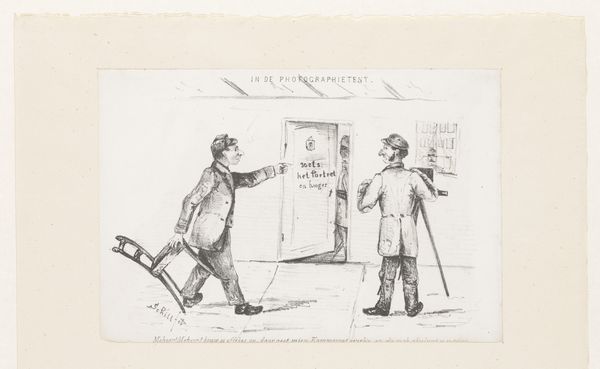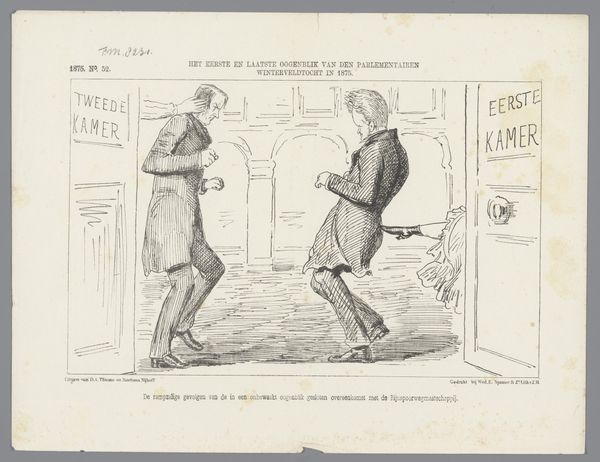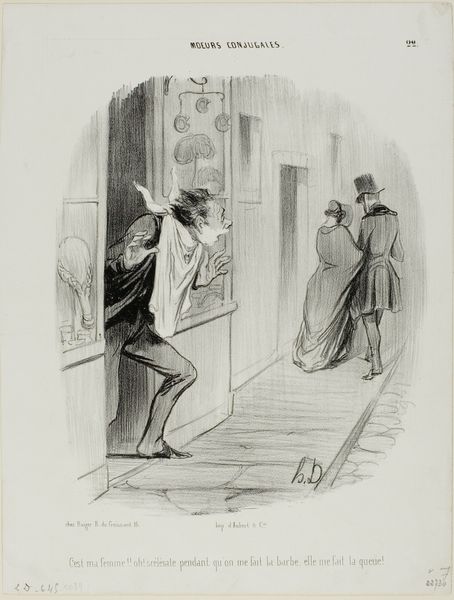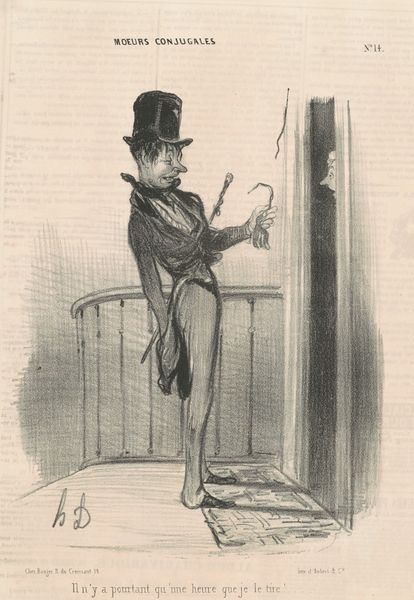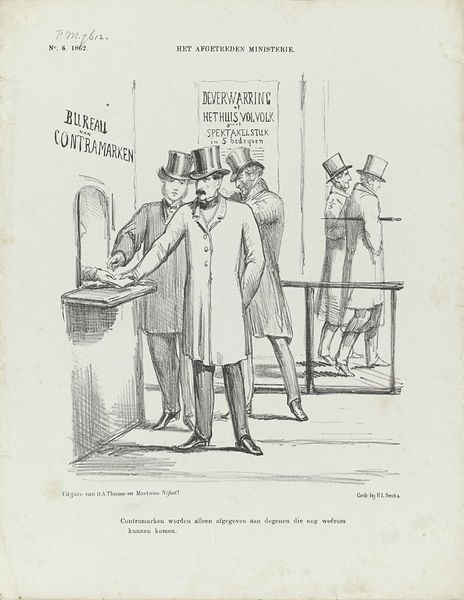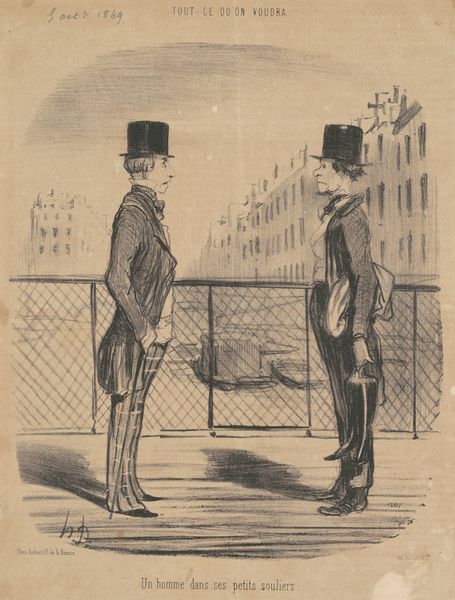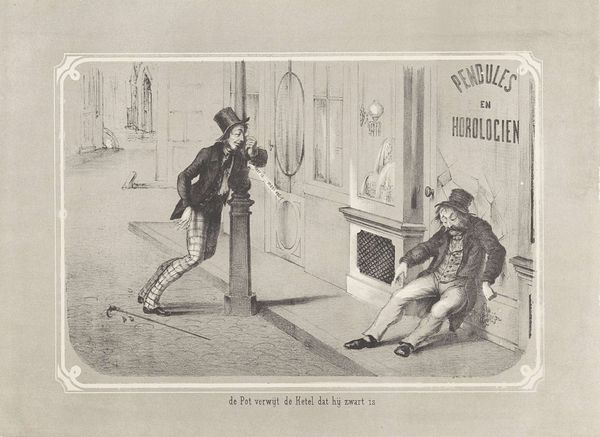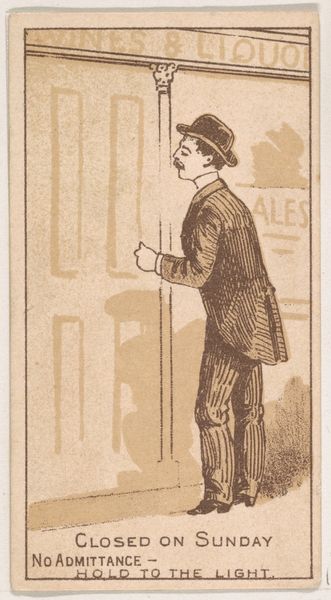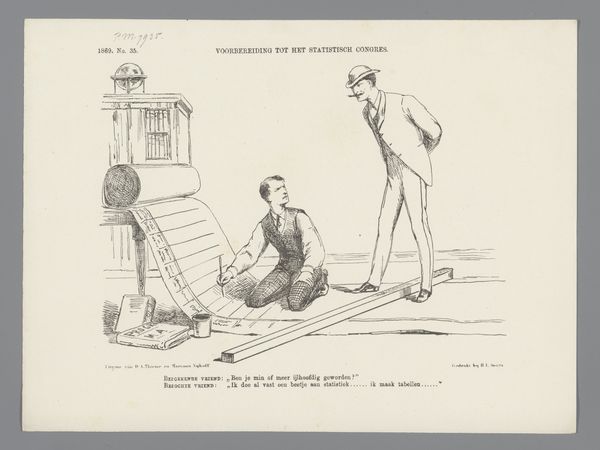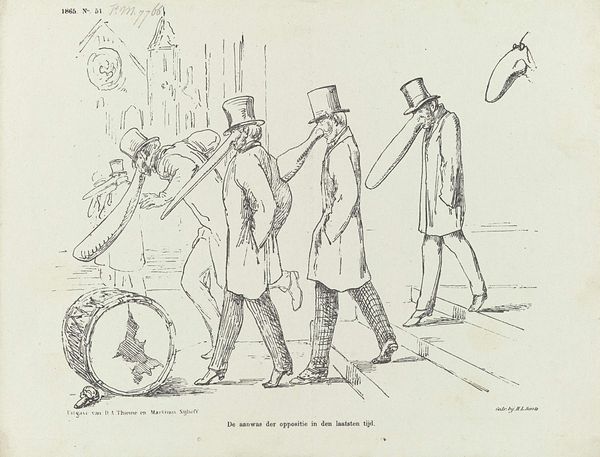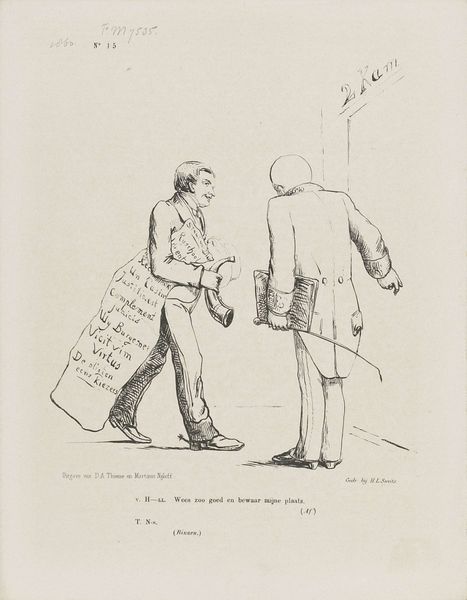
Dimensions: height 215 mm, width 275 mm
Copyright: Rijks Museum: Open Domain
This political print by Johan Michaël Schmidt Crans, dating from 1861, employs potent symbols to critique the Dutch militia law. Observe the stark contrast between the two figures, each emblematic of a stage in military service. On the left, a soldier confidently strides towards the “2de Kamer” or Second Chamber, armed and erect, symbolizing the idealized image of military readiness. Yet, look to the right, and we see a figure transformed by six weeks of "inkwartiering," military billeting. His posture is stooped, his dress disheveled, and on his arm, a crude tattoo marks a loss of innocence or individuality. Consider this alongside depictions of military life across epochs. From ancient Roman battle reliefs to Goya's haunting "Disasters of War," the psychological toll of conflict is a recurring motif. The metamorphosis captured here speaks to a universal anxiety: the fear that the individual will be crushed by the machinery of the state. It resonates with a deep-seated, almost subconscious dread, a perennial theme in the theater of human conflict.
Comments
No comments
Be the first to comment and join the conversation on the ultimate creative platform.
